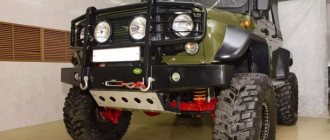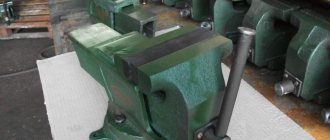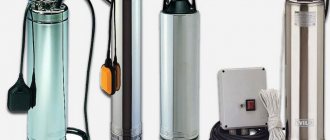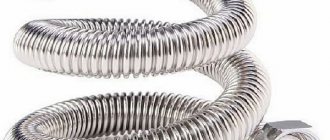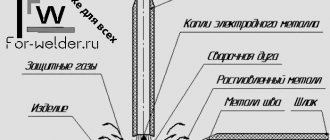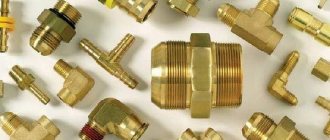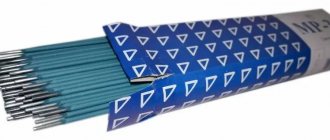Modifying a car to change its technical performance or appearance is not uncommon these days. The quality of domestic roads forces car owners to look for new ways to make the operation of vehicles as easy as possible and increase its reliability. One of the methods that allows you to achieve greater cross-country ability without sacrificing factory characteristics is to increase ground clearance.
For such tuning, special additional parts are used that are mounted under the shock-absorbing springs. Let's take a closer look at how to choose spacers to increase ground clearance, what types of these elements exist, and also determine the best options in terms of efficiency and durability.
Which spacers are better: polyurethane or aluminum?
Ground clearance is the average distance from the road surface to the lower elements of the car body.
Otherwise, ground clearance is called ground clearance, although in the automotive industry there is a more complete formulation of this concept. Often, car owners deliberately use special devices called spacers to increase the ground clearance of their cars.
What do spacers do to increase ground clearance?
Special inserts to increase ground clearance appeared on sale back in the 1980s. Then they were intended mainly to increase the ground clearance of domestic cars, primarily Zhiguli.
The main goals of the clearance increase procedure are:
1. Increasing the cross-country ability of vehicles when driving off-road. Currently, this topic has not lost its relevance. The ground clearance of some foreign cars is now even less than that of domestic cars. When driving in a rut off-road, there is a high probability of “sitting on your belly”, after which you cannot do without outside help.
2. Reducing the likelihood of damaging suspension elements, other parts, wiring, fuel lines located in the lower part of the car.
3. Prevention of snagging by body elements and low overhangs of bumpers and arches of small vegetation when driving on rough terrain.
4. Improving the appearance of the car. Even an old Golf with a high suspension looks more solid.
What are there
Spacers for increasing ground clearance differ in the material from which they are made.
Metal
They have sufficient strength and do not lose their mechanical properties over time. Such spacers can be made of aluminum, copper and its alloys, and less often of steel. A disadvantage of such structures is the possible increase in corrosion due to electrolysis processes at the interface of two metal elements: the body and the spacer.
Rubber
Due to their elasticity, spacers help increase the smoothness of suspension movement and reduce noise effects. The disadvantage of the rubber structure is a limited resource, increased wear, especially under conditions of large temperature changes.
Polyurethane
Such spacers have a high degree of compression and are easily deformed, which, under conditions of high mechanical loads, negatively affects the rigidity of the structure and can lead to deformation of the suspension.
Plastic and composite
High-quality spacers made from such materials adapt to the car’s suspension design as much as possible and have minimal negative impact on the car’s components.
Typically, metal structures are used for the front suspension. Rubber, polyurethane and composite spacers are more suitable for rear suspension.
Structurally, spacers are made in the following form:
- a continuous one-piece ring (sometimes with additional reinforcing inserts);
- metal structures;
- special, usually made of rubber, inserts into springs that increase their length (interturn spacers). Such spacers, in addition to increasing the longitudinal deformation forces of the spring, can lead to their transverse deformation, which, under extreme loads, contributes to damage to the springs.
Their pros and cons
The main advantage of using spacers to increase ground clearance is that there is no need for major design changes. The complex of work required to install them does not take much time; the spacers themselves are inexpensive. They allow you to restore, without significant costs, the ground clearance that was before the springs sank.
The disadvantages of spacers include their relative fragility. Therefore, it is recommended to change them annually.
Of particular importance is the magnitude of the change in ground clearance compared to the standard.
One of the main parameters of a car that affects its stability during extreme maneuvering is the vehicle’s center of gravity. It is calculated for each car model at the design stage. If the ground clearance increases too much, the stability characteristics decrease. This can lead to an emergency situation at maximum overloads.
In addition, when setting a large clearance, a situation is possible when the suspension will be in the zone of maximum deviation from the top point. At the same time, it will practically not work out the unevenness of the road surface associated with the unloading of the wheel (in the pits). This will significantly increase the load on shock absorbers and other suspension components.
Increasing the ground clearance can damage brake hoses, parking brake connections, and wiring to ABS sensors.
Thus, when artificially increasing the vehicle's ground clearance, it should be remembered that the driving characteristics of the vehicle may deteriorate.
Studies have shown that the deterioration in driving characteristics is insignificant when the ground clearance is increased by no more than 5 cm
from its nominal value.
If the car has high ground clearance in the factory configuration, increasing its value by more than 3-4 centimeters is not recommended.
Installing spacers to increase ground clearance
1. Prepare the car body for installation of spacers, freeing up the installation areas as much as possible.
2. Remove the corresponding wheel. Jack up the car.
3. Remove the ABS sensor connectors to avoid damage.
4. Install a device for compressing springs.
5. Compress the springs using a special tool.
6. Install the insert.
If extended bolts are not included, you will need to purchase them.
— how to install spacers to increase ground clearance on a Ford Focus:
Additional recommendations
When choosing spacers to increase ground clearance, you should be guided by the following principles:
- they must be performed on factory equipment. You cannot purchase spacers of dubious origin;
- the installation instructions must indicate the car models to which this design is suitable;
- When determining the maximum thickness of the spacers, it is necessary to measure the vehicle's ground clearance. Then, using reference books, find the standard value (factory value) of ground clearance. For example, the measured value was 200 mm, found in reference books - 210 mm. In this case, the maximum thickness of the spacer will be 210 - 200 + 50 = 60 millimeters, that is, 6 centimeters;
- it is advisable to install front and rear spacers at the same time, since such installation minimally disrupts the stability of the car;
- It is necessary to check the technical condition of the installed inserts at least once every six months before the start of the winter and summer seasons of car operation.
How is engine braking performed on a manual transmission, what gears to choose.
By what parameters and how should you choose a radio station for your car?
Pros and cons of using https://voditeliauto.ru/poleznaya-informaciya/obsluzhivanie/zamena-filtra/nulevogo-soprotivleniya.html zero resistance filter.
— is it worth installing spacers to increase ground clearance (review from a Ford Focus owner):
May be of interest:
Spacers for increasing ground clearance - pros and cons, functions, installation + video
In order to protect the car's suspension from damage while driving on domestic roads, spacers are increasingly being used to increase ground clearance . There are several modifications of these devices, which are installed under the front struts and rear springs. How effective is their use?
Spacers to increase ground clearance - what are they?
Depending on the make of the car, spacers of a certain modification are installed. For front shock absorbers, they are made of steel and aluminum. For the rear springs, devices made of special types of rubber of increased density, as well as plastic and polyurethane, are used.
As for the price, a set of spacers to increase ground clearance costs from 1000 rubles or more - it all depends on the material and the manufacturer. Installing them at a service station does not take much time. The design of the front spacers is a bracket in the form of a box with mounting holes, the rear ones are made in the form of rings with three eyes.
Along with undoubted advantages, such as increasing ground clearance and increasing the vehicle's cross-country ability, such a modernization of the suspension design is fraught with a number of serious disadvantages :
- As the ground clearance increases, the vehicle's center of gravity also shifts upward, which in turn leads to a decrease in its stability and controllability on the road.
- The rigidity and reliability of the suspension design is compromised, while some changes occur in the width of the wheelbase, camber and toe, and the steering angle of the wheels.
- There is more intensive wear of the components and parts of the steering mechanism.
- The position and operation of the shock absorbers changes far from for the better.
Materials used
Reviews from friends, online users and personal observations made it clear that it is extremely important what spacers you buy. When we install the first elements we come across, bought for pennies, we greatly risk our own health and the health of our car.
Go shopping, go to the same Aliexpress, look carefully at the drawing of the proposed spacers. But the most important thing is the material they are made from.
Today spacers are produced on the basis of three different materials.
- Aluminum. Aluminum spacers are quite reliable. By installing them, you will eliminate the process of deformation of the bushings, and also provide a fairly high level of comfort. Many spacers have a negative impact on the ride comfort and performance of the car. Aluminum, as a rule, affects these characteristics less than others.
- Polyurethane. Polyurethane analogues are deformed due to the impact of springs on them when you often drive on uneven roads. Therefore, over time, the risk of damage to the body by its own bushings increases.
- Polymer or plastic. Plastic products are the most reliable and high quality. But only on condition that you buy spacers from truly proven and well-established manufacturers.
What types of spacers are there to increase vehicle clearance?
Ground clearance is the average distance from the road surface to the lower elements of the car body. Otherwise, ground clearance is called ground clearance, although in the automotive industry there is a more complete formulation of this concept.
Often, car owners deliberately use special devices called spacers to increase the ground clearance of their cars.
Which clearance spacers should I choose?
Poor quality road surface, and sometimes its complete absence, forces owners to systematically improve the car and its technical characteristics. One method is to increase the ride height using polyurethane spring spacers.
The higher the ground clearance, the stronger the cross-country ability of the car, especially an SUV. But the main thing here is not to overdo it. Excessive height reduces stability, for example, a large insert in the spring retains compression, the shock absorber becomes stiffer, and cases of tipping over on its side are not uncommon.
There are inserts that are mounted under the shock absorber. They vary in material, depending on the purpose of use. Let’s take a closer look at which inserts are more effective: polyurethane or aluminum. The main grading criteria are: elasticity, shock absorber brand, insert height, insert material.
What determines the choice of spacers?
When purchasing consumables yourself, rely on the technical indicators of your SUV:
- shape: each spring has its own parameters. If you have no experience, it is better to get advice from a specialist, a car dealership manager. Unprofessional intervention often leads to negative consequences;
- height: lifting the SUV above 3-5 cm reduces control efficiency by 25%, balancing is disrupted. Experts recommend 2 cm for the front suspension, and 3-5 cm for the rear. Anything higher is ineffective;
- material: metal, rubber, rubber mixtures, polyurethane.
Disadvantages: the directional stability of the car does not change - the insert in the spring makes it responsive, but not elastic. There is more ground clearance, but less smooth operation.
Which spacers are best to choose to increase ground clearance?
To answer objectively, let’s consider each type sequentially:
- aluminum: strength is the main trump card. Withstand heavy loads, minimal susceptibility to corrosion, versatility of use in different climatic regions and temperature conditions. Cost is the only negative factor;
- polyurethane: a material that is not inferior to its metal counterparts. Polyurethane spacers are elastic and tear-resistant. When falling into a hole, the bushing does not deform; after a short compression it returns to its previous position;
- rubber: increased elasticity against the background of relative wear resistance, short service life. Susceptible to rupture and deformation even under severe load.
Conclusion
For passenger cars with low ground clearance, installing spacers to increase ground clearance is a beneficial solution. The main thing is to choose correctly, install correctly and operate correctly.
It is beneficial to install aluminum, rubber, silicone spacers. They just have different lifespans and affect driving differently. Aluminum ones are more durable, rubber and silicone ones are universally soft and do not affect control, but wear out faster.
In order not to significantly change the driving characteristics of the car, you should not raise the car more than 3 cm.
Spacers to increase ground clearance: pros and cons
Hello, dear friends! Are you bored? Me too. Today we are considering a rather interesting issue - spacers to increase ground clearance.
I know that car owners often try, on the contrary, to lower the car, to make it as low as possible. But you yourself understand who is doing this. Especially when it comes to cars such as VAZ 2109, 2110, etc.
Take any car, Peugeot, Honda, Opel, Mazda, Nissan, Toyota, Audi. Only a few of them have really high ground clearance, that is, ground clearance. And then, this mainly applies to crossovers.
I agree that cars like Renault Logan and Skoda Octavia Tour are high.
But the Chevrolet Lacetti, Ford Focus, Kia Sid or Rio, Mazda 3, Hyundai Accent, Volkswagen Passat sometimes clearly do not reach the height that is needed for our roads.
It is the poor quality of roads that forces car owners to change their clearance sizes. One method is spacers. They are installed in the rear and front wheels. Moreover, many do it with their own hands. A bunch of relevant training videos to help you.
Buying yourself a set of spacers is not as expensive as completely changing the springs or replacing a set of wheels with a larger diameter. Although spacers have their drawbacks.
What are they needed for
I won’t be unfounded, but I’ll just give simple examples from life. I think they will allow you to understand why it is worth considering the issue of installing spacers to increase ground clearance.
- The car is initially quite low. This applies to imported cars, since our automakers understand that fighting the roads is pointless, as is waiting for their quality to improve. Therefore, they try to adapt to current conditions, offering high ground clearance. But even that is not enough. As a result, driving through the next section, you again and again cling to the bottom, crankcase protection, cannot pass the curb, brake before each hole so as not to get hit. All this interferes with normal movement and driving turns into a test.
- You often have to load the machine. A cabin full of people or a huge amount of luggage noticeably sits down the car, which begins to scrape along the asphalt and rub its wheels against the fender liners. Agree, this is not very pleasant.
Installing spacers is the most optimal solution to the problem, if you look at it from a price-quality perspective. They increase rigidity and increase the distance from the bottom to the ground.
Fortunately, my car is quite high, but this problem is very close to me, since my friends do not have such ground clearance.
Actually, I would like to install inserts for them too, since I have to constantly take my car if we go somewhere in nature or outside the city. But let's not talk about sad things.
I think it’s very clear to you why these spacers are needed and what function they perform. But before you install and even purchase these elements, which are sold not only in Volgograd, but also in any cities such as Moscow, St. Petersburg, Novosibirsk, Yekaterinburg, Krasnoyarsk, etc., I suggest you find out what these spacers are.
Varieties
There are three main types of these elements used to increase ground clearance and increase the rigidity of a car's suspension.
- Interturn. Mounted in springs. They are considered the simplest and most accessible. Strengths include ease of installation and versatility. They are mounted in the rear and front springs. However, you should not count on an increase in ground clearance. They are designed to increase rigidity. Having installed them, you can easily load the car, place bags in it and not worry that the bottom of the car will start to rub against the asphalt. Installation is generally elementary. You need to jack up the car, hang the desired wheel and stretch the spring. Then a spacer is inserted there. Advice from me personally. Before inserting the element, wet it with soapy water. This way he will easily fit into his place.
- Under the springs. The problem of insufficient ground clearance is already being solved here. The element is mounted between the spring itself and the body of your car. Please note that the ground clearance rises exactly as much as the thickness of the spacer. Remember, if you install a spacer on a body with traces of corrosion and a faulty spring, the consequences can be dire. Also, if the spring sag, spacers for the spring will be ineffective. At this point, immediately replace them with new ones.
- Spring adjustable. They perform a function similar to the previous version, but can be adjusted. Well, yes, you already understood it from the title. A good option, since you will be able to quickly change the clearance height, if necessary, depending on the load of the machine. Yes, their price is higher, but it is completely justified if you want to do everything really efficiently and usefully.
Materials used
Reviews from friends, online users and personal observations made it clear that it is extremely important what spacers you buy. When we install the first elements we come across, bought for pennies, we greatly risk our own health and the health of our car.
Go shopping, go to the same Aliexpress, look carefully at the drawing of the proposed spacers. But the most important thing is the material they are made from.
Today spacers are produced on the basis of three different materials.
- Aluminum. Aluminum spacers are quite reliable. By installing them, you will eliminate the process of deformation of the bushings, and also provide a fairly high level of comfort. Many spacers have a negative impact on the ride comfort and performance of the car. Aluminum, as a rule, affects these characteristics less than others.
- Polyurethane. Polyurethane analogues are deformed due to the impact of springs on them when you often drive on uneven roads. Therefore, over time, the risk of damage to the body by its own bushings increases.
- Polymer or plastic. Plastic products are the most reliable and high quality. But only on condition that you buy spacers from truly proven and well-established manufacturers.
Summarize
I cannot advise or dissuade you from installing spacers. Much depends on the specific car, its condition, driving style, operating conditions, and so on.
The reason to refuse spacers may be the fact that after their installation the levers are lowered and are constantly in this state. As a result, the geometry is disrupted, the suspension system works differently, and changes for the worse, the previous sensitivity of the steering is lost, and the car can skid at high speeds.
Spacers also increase the load on the suspension itself; silent blocks, shock absorbers, and steering rods wear out.
It's up to you to decide. Think about where to buy spacers and whether it is worth buying them specifically in your case. It may be easier to change the wheels or the springs themselves. It's more expensive, but safer.
Share your impressions if you have used spacers. Don't forget to leave comments, invite your friends and tell everyone you know about us. This is not difficult for you, but we are incredibly pleased!
Thanks for reading! Please rate the article
(20 4,50 of 5) Loading...
What are they needed for
I won’t be unfounded, but I’ll just give simple examples from life. I think they will allow you to understand why it is worth considering the issue of installing spacers to increase ground clearance.
- The car is initially quite low. This applies to imported cars, since our automakers understand that fighting the roads is pointless, as is waiting for their quality to improve. Therefore, they try to adapt to current conditions, offering high ground clearance. But even that is not enough. As a result, driving through the next section, you again and again cling to the bottom, crankcase protection, cannot pass the curb, brake before each hole so as not to get hit. All this interferes with normal movement and driving turns into a test.
Installing spacers is the most optimal solution to the problem, if you look at it from a price-quality perspective. They increase rigidity and increase the distance from the bottom to the ground. Fortunately, my car is quite high, but this problem is very close to me, since my friends do not have such ground clearance. Actually, I would like to install inserts for them too, since I have to constantly take my car if we go somewhere in nature or outside the city. But let's not talk about sad things.
I think it’s very clear to you why these spacers are needed and what function they perform. But before you install and even purchase these elements, which are sold not only in Volgograd, but also in any cities such as Moscow, St. Petersburg, Novosibirsk, Yekaterinburg, Krasnoyarsk, etc., I suggest you find out what these spacers are.
Selection and installation of spacers to increase ground clearance
To increase ground clearance between the road surface and the car body, special spacers are used. It is also worth installing such parts when the shock absorber spring has weakened significantly. The inserts differ in materials, as well as in the installation location (interturn spacers, under the spring, above the spring).
What do spacers do after installation?
Increasing clearance is useful in the following cases:
- Car owners decide to increase the vehicle's off-road capability and in the city, taking into account the condition of roads in the Russian Federation.
- Reduce the likelihood of damage to elements in the lower part of the vehicle.
- Soften the dynamic load on the suspension.
- With high ground clearance, any car looks impressive.
Pros and cons of increasing ground clearance and what types of spacers are there
In addition to increasing clearance, there are other advantages:
- The cross-country ability of a car with high wheels increases significantly; you can make an SUV.
- Wheel springs that have sagged over time return to their place after.
- The underbody of the car is protected from damage.
The disadvantages include the following factors:
- Shifting the vehicle's center of gravity, reducing vehicle controllability.
- Front suspension instability.
- Reduced service life of the steering system.
- Deterioration of shock absorbers.
Pneumatic cylinders in springs
Pneumatic cylinder inserts are used most actively to increase ground clearance. They should be installed in the rear wheel springs. After pumping, the cylinders increase several times and stretch the lumen.
- Easy installation and increased load capacity.
- It is sometimes necessary to pump up the cylinders manually, maintain and replace the cylinders after a few years.
Rubber spacers
Rubber inserts are also used. The element is placed under the rear pillar. The thickness of such a shock-absorbing cushion depends on the distance you want to achieve.
- There is no deformation of the body, rubber does not rust over time, the service life of mechanisms and systems does not decrease.
- Difficult to install, especially on the rear pillar.
Spring buffers
Spacers for increasing ground clearance are made of rubber and aluminum - they are also called “Spring Buffers”. Installation of such an element is simple - just place a gasket of the required thickness under the spring support plate.
- You can achieve a significant increase in ground clearance; when installing such special shock-absorbing cushions, it is also possible to adjust them without removing them.
- Not suitable for sagging springs, cannot be installed on a rusted body.
What they write about spacers-auto-buffers on the DRIVE2 auto portal:
Spring inserts
Metal spacers of this type are placed directly into the springs. Can be installed on both front and rear wheels. It is worth making a choice in their favor if the car has a significantly reduced ground clearance.
- The element also allows you to increase the vehicle's carrying capacity and avoid subsidence after loading.
- Insufficient increase in ground clearance.
Interturn spacers for cars
An autobuffer is also placed between the coils of springs - this is an elastic polyurethane cushion that helps absorb shock and vibration.
- The car does not “bite” when braking, softening shocks, for example when driving over speed bumps, increasing ground clearance and suspension life.
- Expensive set if you buy 4 pieces.
What materials are used
Before purchasing spacers, you need to decide on the design (type) and material. The following varieties are distinguished:
- Polyurethane. They have a high degree of compression, are very easily deformed, and therefore can lead to damage to the suspension. However, they are very cheap and easy to install.
- Rubber. Very elastic, helping to achieve smooth suspension. Absorbs noise and vibrations. However, they have a limited internal resource and wear out quickly.
- Plastic and composite. Adapts to the car as much as possible. Among the disadvantages is a short service life; the spacer will have to be changed every year.
- Aluminum. Quite reliable and durable, they deform only in the presence of significant mechanical loads. However, they last less than iron.
- Metal. Very durable, do not lose their performance properties over time. Among the disadvantages is the possibility of corrosion when the metal spacer and the body come into contact. They serve only to increase ground clearance.
Which material is better
The choice of material depends on the needs of the car owner and the condition of the car itself. Below is a table from which you can select a material.
Criteria Polyurethane Rubber Composite Aluminum Metal Impact on suspension Service life Difficulty of installation Damage to the vehicle Possibility of deformation
| Long-term use leads to damage | Helps achieve smoothness, absorbs all vibrations | Have no significant impact | Have no significant impact | Have no significant impact |
| Long | Wear out quickly | Brief - you need to change the spacer every year | Average | Long lasting, considered the most durable |
| Very simple | Simple | Average | Average | Average |
| May damage suspension | Does not cause significant harm | Does not cause significant harm | Does not cause significant harm | May lead to the appearance of rust on the car body at the point of contact between the structure |
| Easily deformed | Deformed over time | Deformed over time | Deformed from strong mechanical loads | Virtually no deformation |
Which is better: buffers or spacers?
Before you can understand which designs are better, you need to determine the differences between these elements.
Spacers have only one purpose – to increase the distance to the road surface. A set of parts for 1 wheel costs from 1 thousand rubles and more. Installed next to the upper strut support (support bearing).
To install the inserts, you must remove the wheels and suspensions. They have the following disadvantages: the suspension balance is disrupted, the center of gravity shifts, and the load on the shock absorbers increases.
Autobuffers are shock-absorbing cushions installed between the coils of wheel springs. They help increase ground clearance and reduce the load on the suspension. It is installed using a regular auto jack - it is attached to the coils of the spring.
The only drawback of buffers is that they are quite expensive. For 1 element you need to pay from 1600 rubles. However, if possible, it is better to install autobuffers on the car. Read the article “Pros and cons of auto-buffers.”
Advantages of autobuffers:
What they write about spacers-auto-buffers on the DRIVE2 auto portal:
The best spacer manufacturers
The choice of manufacturer is not important when purchasing spacers. There are few specialized manufacturers on the market who deal only with these products. Online stores often sell OEM goods, without a brand. It is important to select spacers based on material and size.
The following companies are recommended for purchase:
- AUTODVC. They produce elements that are installed directly under the spring, both front and rear sets. Allows you to raise the ground clearance by 30-40 millimeters. The catalog contains products for many car brands: AUDI, VW, SKODA, LADA, etc. Quite durable, made of metal or aluminum. Among the disadvantages is that they can lead to corrosion on iron body elements.
- Power Guard. This manufacturer produces inter-spring buffers. Helps increase ground clearance by 30 millimeters. They are not too expensive, but they are durable and reliable. Helps increase the shock-absorbing properties of the car. It is difficult to find the original for sale.
- Amortect. New supplier. More expensive analogue of Power Guard. The product has an increased service life, but you will have to pay 4-5 times more.
- POLYEDR. They produce polyurethane cushions that are placed directly under the springs and above the body. One of the main advantages of this solution is low cost. But the buffers wear out very quickly. It is necessary to purchase a set of tabs in advance and change them every few months.
Reviews from car owners and installation instructions
Real users do not agree on the use of spacers. Some car owners consider them a useless purchase, while others are in favor of installation and write positive reviews about their experience of use.
The following opinions can be found on the forums:
- Helps to cope with the problem of a sagging rear, as opposed to replacing springs and shock absorbers.
- Does not affect the safety and controllability of the car in any way, unless you drive at a speed of 120 km/h.
- To avoid any consequences, it is necessary to install only original spacers from the manufacturer.
- Raising the car excessively looks like a collective farm. It is worth using autobuffers if you need to cope with the problem of a sagging body.
- Such a modification may unbalance the mechanism systems.
Installing spacers on rear pillars
For the rear wheels, you can use thick rubber inserts, air springs or autobuffers. Depending on the car model, it may be necessary to remove the rear struts, but for example, with buffers it’s easier; you don’t have to dismantle them. Follow the photo report.
Instructions for installation without removing the stand:
- First, hang the rear on a jack, then remove the wheels.
- Tighten the spring using a zip tie
- Disconnect the lower shock absorber mounting.
- Remove the spring and install a spacer on it.
Installing spacers on the front struts
The procedure depends on the model of your car. To install, you need to remove all the elements and get to the wheel springs. Extended bolts must be included in delivery. For proper installation, follow the universal instructions:
- Remove the front wheels.
- Raise the car using a jack.
- Remove the ABS sensors.
- Compress the springs using zip ties.
- Install the insert.
- Release the spring.
To install an interturn autobuffer, there is no need to remove the spring.
How to make a spring insert with your own hands
The design features of the tabs are quite simple, so you can make the part yourself. The presence of drawings is mandatory for the manufacture of metal inserts. Also focus on the dimensions of your car - measure the diameter of the spring itself and the mounting surfaces.
Here are a few standard drawings that can be found on the Internet and on specialized forums for your car.
How to choose and use
- Don't buy tabs secondhand. Stable suspension requires good factory parts. Otherwise, the purchase may damage the car.
- Please note: the buffer must be suitable for your specific car model.
Pay attention to the list in the official instructions. Select autobuffers according to car sizes and models. - To select the maximum clearance, measure the current clearance and find the standard in the reference book. Subtract the smaller value from the larger one and add 50mm.
- Increase the ground clearance at the rear and front at the same time - this will help improve the car's handling.
- Every winter and summer, check the condition of the parts, change them if necessary.
Pay attention to the features of a particular type of inlay - iron takes a long time to deteriorate, and polyurethane quickly.
How to increase ground clearance without spacers
- One of the simplest methods is to change the wheels to a higher height. However, there are limitations - the design features of the car dictate the maximum height of the wheel arch. You cannot install wheels larger than this value.
- The second way is to replace the shock-absorbing springs.
However, in this way you can only cope with the problem of a sagging body. It is impossible to raise the car 2 centimeters or more. The advantage of the method is that controllability is not reduced. - The third option is to change the rims. When purchasing, keep in mind that not every disc is suitable for your hub. This method helps to increase ground clearance slightly, but this allows you to mask uneven road surfaces.
Author of the material:
Varieties
There are three main types of these elements used to increase ground clearance and increase the rigidity of a car's suspension.
- Interturn. Mounted in springs. They are considered the simplest and most accessible. Strengths include ease of installation and versatility. They are mounted in the rear and front springs. However, you should not count on an increase in ground clearance. They are designed to increase rigidity. Having installed them, you can easily load the car, place bags in it and not worry that the bottom of the car will start to rub against the asphalt. Installation is generally elementary. You need to jack up the car, hang the desired wheel and stretch the spring. Then a spacer is inserted there. Advice from me personally. Before inserting the element, wet it with soapy water. This way he will easily fit into his place.
- Under the springs. The problem of insufficient ground clearance is already being solved here. The element is mounted between the spring itself and the body of your car. Please note that the ground clearance rises exactly as much as the thickness of the spacer. Remember, if you install a spacer on a body with traces of corrosion and a faulty spring, the consequences can be dire. Also, if the spring sag, spacers for the spring will be ineffective. At this point, immediately replace them with new ones.
- Spring adjustable. They perform a function similar to the previous version, but can be adjusted. Well, yes, you already understood it from the title. A good option, since you will be able to quickly change the clearance height, if necessary, depending on the load of the machine. Yes, their price is higher, but it is completely justified if you want to do everything really efficiently and usefully.
How to make a spring insert with your own hands
The design features of the tabs are quite simple, so you can make the part yourself. The presence of drawings is mandatory for the manufacture of metal inserts. Also focus on the dimensions of your car - measure the diameter of the spring itself and the mounting surfaces.
Here are a few standard drawings that can be found on the Internet and on specialized forums for your car.
Summarize
I cannot advise or dissuade you from installing spacers. Much depends on the specific car, its condition, driving style, operating conditions, and so on.
The reason to refuse spacers may be the fact that after their installation the levers are lowered and are constantly in this state. As a result, the geometry is disrupted, the suspension system works differently, and changes for the worse, the previous sensitivity of the steering is lost, and the car can skid at high speeds.
Spacers also increase the load on the suspension itself; silent blocks, shock absorbers, and steering rods wear out.
It's up to you to decide. Think about where to buy spacers and whether it is worth buying them specifically in your case. It may be easier to change the wheels or the springs themselves. It's more expensive, but safer.
Share your impressions if you have used spacers. Don't forget to leave comments, invite your friends and tell everyone you know about us. This is not difficult for you, but we are incredibly pleased!
( 18 ratings, average: 4.61 out of 5)
Did you like the article?
Subscribe to updates and receive articles by email!
We guarantee: no spam, only new articles once a week!
- ✅ Contents of the article:
- 1. When is it useful to increase the ground clearance of a car?
- 2. Types of spacers - their pros and cons
- 2.1. Pneumatic cylinders
- 2.2. Rubber shock absorbing pads
- 2.3. Buffers in springs
- 2.4 Metal spacers in the spring
- 2.5. Interturn spacers
- 3. What materials are buffers made from?
- 4. Which material is better to choose spacers from?
- 5. Buffers or spacers - which is better to choose?
- 6. Review of spacer manufacturers
- 7. Reviews from car owners
- 7.1. Instructions for installing spacers on rear pillars
- 7.2. Instructions for installing buffers on the front struts
- 7.3. Photo of the spacer installation process
- 7.4. Installation of interturn autobuffers - photo instructions
- 8. We make an insert for the spring with our own hands - typical drawings
- 9. How to choose and use buffers
- 10. How to increase clearance without autobuffer
To increase ground clearance between the road surface and the car body, special spacers are used. It is also worth installing such parts when the shock absorber spring has weakened significantly. The inserts differ in materials, as well as in the installation location (interturn spacers, under the spring, above the spring).
